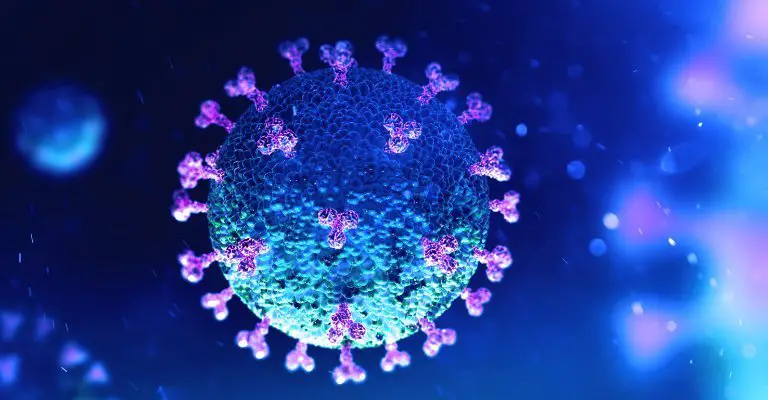Cross immunity may be a new answer to COVID-19, the COVID-19 pandemic generates news day by day, and fortunately not all of them are bad. Among the latest news is the publication of an interesting paper that talks about cross immunity.
This could explain the diversity and enormous difference between clinical results. It could also justify the incidence of the disease in the population or why some patients are completely asymptomatic. Finally, if the researchers’ hypothesis is confirmed, it could mean that we are much closer to obtaining group immunity than previously thought . What do we know about it?
Up to 50% of people could be “immunized”
In a recent paper from the La Jolla Center for Infectious Diseases and Vaccine Research, the researchers demonstrated the existence of cross immunity to SARS-CoV-2 in humans (and in the laboratory). In other words, they have been able to verify that some people are immunized against the coronavirus without ever having been exposed to it before.
How is this possible? The hypothesis, while interesting and bold, is not new. It has been previously discussed by numerous teams that see a discordant pattern in clinical results that does not entirely fit any model. It plays on the idea that exposure to other viruses (various human coronaviruses, for example) could trigger an immune response that helps control COVID-19.
In the study, the researchers showed that, in the laboratory , these people not exposed to COVID-19 showed what is known as cross immunity reaction against molecules present in the virus. The team believes that this could explain various issues, such as the existence of so many asymptomatic people or the different manifestations of the disease.
The most interesting thing could be the fact that, if confirmed experimentally, the existence of this cross immunity and its effectiveness would mean that between 20 and 50% of people around the world would already have the ability to resist this coronavirus , so we would be much closer to achieving the group immunity we crave.
- Apple and Google launch app to detect cases of coronavirus
- Coronavirus measure: Whatsapp limits bulk message forwarding
How does cross immunity for COVID-19 work?
Many cells and hundreds of molecules participate in an immune response. There are various levels of response and effectiveness. However, oversimplifying, acquired immunity is that a pathogen enters the body and is identified. After fighting it the first time, in which the battle is tough (fever, infection, illness…) the body “remembers” the pathogen. When it re-enters, the system will react before it can generate the infection again.
How can the immune system generate a “memory” of something it has not seen? Viruses and bacteria share many, many molecular structures. Some have not changed in millions of years, while others have in months. When one of these molecules that has remained unchanged for so long occurs in two different viruses, the body is able to detect both even if it has only faced one of them.
The same is what happens with SARS-CoV-2, according to the study we were talking about. Researchers have shown that CD4 + T lymphocytes, a type of white blood cell, are capable of detecting the coronavirus causing COVID-19 in the serum of people who have been in contact with other coronaviruses such as OC43 (typical of the common cold); HKU1, NL63 (which cause respiratory diseases); or the 229E (also responsible for the cold).

Explained in another way, that the immune systems of people who have suffered from some type of common cold or condition caused by coronaviruses show a natural defense capacity (reactive cross immunity) against SARS-CoV-2 . In the world, they estimate, between 20 and 50% of people are within these parameters. Does that mean that we are close to stopping the pandemic and without knowing it?
Questions, answers and unsolved questions about cross immunity to SARS-CoV-2
Unfortunately, and although the news seems extremely positive, there are still many doubts and questions to be resolved. This is not the time to rush by taking ideas or interpretations that do not correspond to reality. Let’s see why:
If it is proven, does it mean that it is something that happens in humans?
No. These results are experimental and in vitro . As we said, the immune response is terribly complex and has many levels. Although these researchers have verified this phenomenon in a petri dish, it is necessary to ensure that this also happens in the human body. It may not be a valid manifestation on a physiological level. Further research is needed on how cross-immunity against SARS-CoV-2 occurs in humans.
Can exposure to a virus other than SARS-CoV-2 protect
Yes. Cross immunity, also against coronavirus, is a phenomenon that has been known for a long time . That is why many researchers wondered if this also happened with SARS-CoV-2. That does not mean that it happens with this particular coronavirus, although the results in the laboratory are promising. On the other hand, even if it exists, that does not mean 100% that a person is protected. We repeat: the manifestation of the immune system is terribly complex.
How long should it have been since exposure to the cold?
It is not known. Researchers have done in vitro tests with serum from people exposed to these other viruses before COVID-19 appeared . Immunity to these other coronaviruses can be long, or very short. In addition, there are also the mutations of these viruses. Which are important and which are not? Without a doubt, this is one of the most important “Xs” to clear yet.
Does that mean we only have 50-20% left to get group immunity?
We do not know. Let us remember that for a community to be properly protected against disease, the immunity of a percentage of the population is required. For COVID-19 the percentage is estimated at 70% . However, due to the individual functioning of the immune response (which is still largely unknown for SARS-CoV-2) as well as other epidemiological issues, we cannot assure how much more of the population it would take, more, to reach group immunity. What we can say is that, if cross immunity is confirmed, we would be much closer to achieving it.





